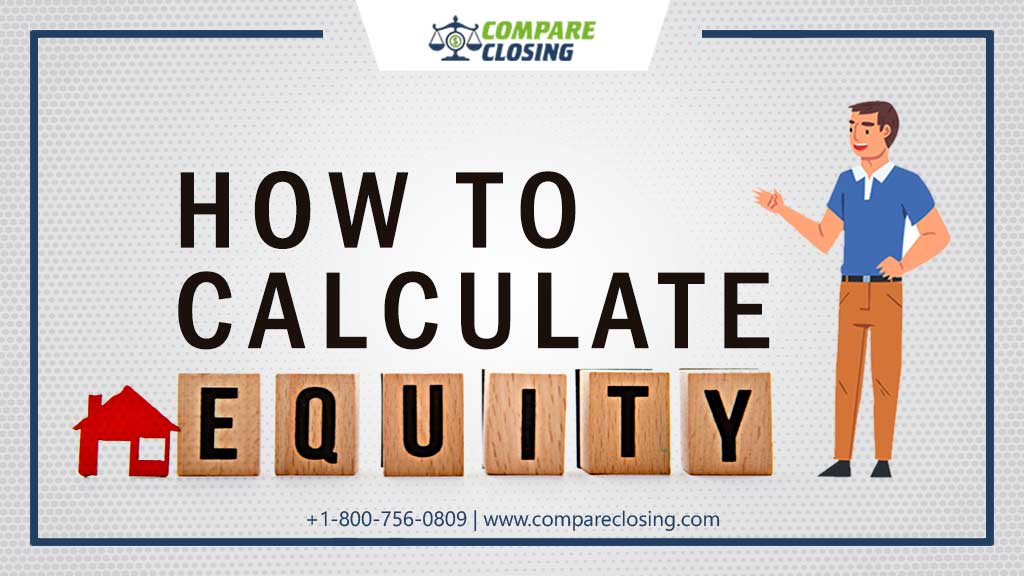Table of Contents
- What Are Netting Escrows & How Does It Work?: The Best Guide - January 2, 2024
- The Secret About Prescriptive Easement: Top Guide 1 Must Know - December 4, 2023
- About Home Equity Loans In Texas And How Can One Obtain It - November 27, 2023
Today in this post we will learn how to calculate home equity and understand the list of factors involved and superior guide to build equity in your home.
Introduction To Home Equity
If a person plans to sell or refinance their home it is important for them to understand the amount of equity they have in their home.
When selling a house, the ultimate goal of everyone is to profit from its equity. In real estate, the term home equity means a home’s value relative to what’s owed on it.
If a home is sold for more than what one owes, it is positive equity. Likewise when the home is sold for less than what one owes, then they are in a negative equity situation.
It is obvious that the ideal time to sell a house is when one can make a profit.
How To Calculate Home Equity?
The difference between the appraised value of a home and the amount one still owes on their mortgage is the home equity.
The amount of equity one has in the home influences their finances in many ways – like whether they need to pay private mortgage insurance, what financing options are available for them, etc.
Home equity = Current appraised value – mortgage balance.
How Much Equity Does The Home Have?
To identify their home equity one needs to deduct the amount they owe on all loans secured by their house with the home’s appraised value.
If the appraised value of the home is lower than what they owe on their mortgage, then it is an underwater mortgage meaning they would not have any equity in their home.
How Does Your Loan Get Affected By The Loan-To-Value Ratio?
To make a decision about loans and financing the most common measure lenders may use is the loan-to-value ratio (LTV).
When a borrower first applies for a mortgage, this equation compares the amount of the loan they are expecting to the home’s value.
If the borrower has a current mortgage, their LTV ratio would be based on their loan balance.
LTV ratio is the deciding factor if a customer is required to have private mortgage insurance (PMI) or if they can qualify to refinance.
To know their LTV ratio, a homeowner should divide their current loan balance (which can be found on their monthly statement or online account) with the home’s appraised value. to convert it to a percentage that number should be multiplied by 100.
Loan to value ratio = current loan balance / current appraised value X 100
To determine one’s loan to value ratio it is ideal to get a professional appraisal of the home done.
A lender can arrange for a qualified appraiser to come to your home and assess its value to get an on-site appraisal done.
To determine what your home is worth, a home appraisal is the most accurate way, but there are other free online tools that can also provide an estimate of your home’s value.
What Are Private Mortgage Insurance And Ways To Cancel Them?
In the event a homeowner defaults on their mortgage then PMI which is actual insurance protects a lender.
Who needs to pay PMI? If a borrower’s down payment was less than 20 % of the home’s purchase price, then the lender may have required private mortgage insurance on their original mortgage.
The requirement of private mortgage insurance exists only when the loan-to-value ratio is above a certain threshold.
When a home’s LTV ratio is 78 % or lower and if certain requirements are met then the Homeowners Protection Act requires lenders to automatically cancel PMI.
When the loan balance reaches 78 % of a home’s original appraised value then this cancellation is often preplanned.
However, if a borrower has made extra payments then they have the right to request their lender to cancel the PMI if their LTV ratio drops below 80 % before the schedule.
The Calculation For A Home Equity Line Of Credit
If a borrower is considering a home equity loan or line of credit, then their combined loan-to-value ratio (CLTV) is another important calculation.
The CLTV ratio evaluates the value of the borrower’s home to the combined total of the loans secured by it, counting the loan or line of credit that they are looking at.
A combined loan to value ratio (CLTV) = Current loan balance + HELOC / Current appraised value.
Even though the CLTV ratio requirement may vary from lender to lender but most lenders require the CLTV ratio to be below 85 % to qualify for a home equity line of credit.
But the home’s value can fluctuate over time so if the value drops, they may not be eligible for a home equity loan or line of credit, or they may end up unsettled more than what their home is worth.
How Can One Increase Their Equity?
Equity can be built by paying down the loan’s principal and lowering one’s loan-to-value ratio.
If the payments are amortized meaning if it is based on scheduled monthly payments by which one repays their loan in full by the end of its term then paying it regularly without default.
To lower one LTV ratio and increase their equity more quickly, a borrower can consider paying more than the required mortgage payment each month.
This helps in finishing the loan balance faster. However one needs to make sure that the loan doesn’t carry any prepayment penalties.
A borrower can also protect the value of their home by keeping it well-maintained. Making improvements to the home may also increase its value and thereby increase the home equity.
Before investing in any renovations it is suggested that the borrower consults an appraiser or real estate professional to get a better estimate of how it will impact the value of a home.
Conclusion
Home equity means a home’s value relative to what’s owed on it. It is important to understand that immaterial of any changes sometimes economic conditions can affect the home’s value.
If home prices boost, the LTV ratio could go down, and thereby increasing the home equity, the falling home prices could terminate the value of any improvements that a borrower would have made.
Amanda Byford
Amanda Byford has bought and sold many houses in the past fifteen years and is actively managing an income property portfolio consisting of multi-family properties. During the buying and selling of these properties, she has gone through several different mortgage loan transactions. This experience and knowledge have helped her develop an avenue to guide consumers to their best available option by comparing lenders through the Compare Closing business.





